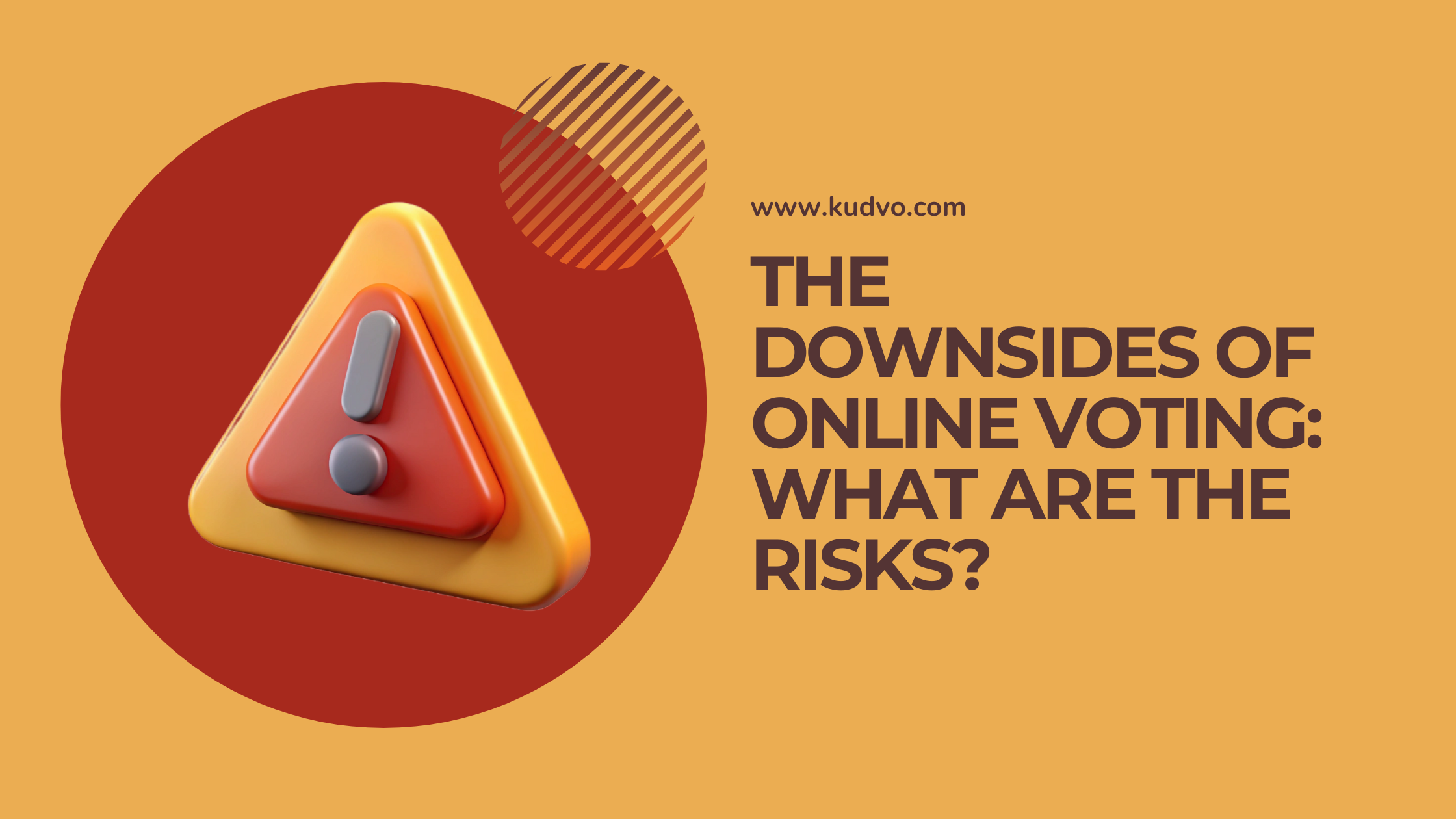The Downsides of Online Voting: What Are the Risks?
Introduction
Can we trust an election held entirely online? In an age where convenience is king, online voting sounds like the next logical step. But the road to digital democracy isn’t without bumps.
As online voting gains attention globally, it’s essential to understand not just its benefits, but also its potential dangers. From cybersecurity threats to concerns about equity, the risks are real—and they matter.
In this post, we’ll break down the key challenges of online voting, share real-world examples, and explore why a cautious approach is crucial. If you're passionate about accessible, secure voting solutions, platforms like Kudvo are worth watching—they’re working hard to make digital systems safer and more inclusive.
1. Cybersecurity Threats and Vulnerabilities
Perhaps the most alarming risk of online voting is cybersecurity. Election systems are high-value targets for hackers—both domestic and foreign.
Potential threats include:
DDoS attacks: Overloading servers to crash systems during voting periods
Malware or spyware: Intercepting or altering votes
Phishing and identity theft: Targeting voters to hijack credentials
Even countries with advanced cyber infrastructure, like the U.S., have struggled with election-related threats. In 2020, multiple federal agencies warned of foreign interference targeting voter confidence.
When votes can be manipulated—or even perceived as manipulable—it undermines the legitimacy of democratic outcomes.
2. Lack of a Paper Trail
Traditional voting systems often rely on paper ballots for auditing and recounts. With online voting, this physical backup can be lost.
Without a verifiable paper trail:
It becomes harder to detect fraud or system malfunctions
Public trust in election integrity can erode
Errors may go unnoticed or uncorrected
Example: In 2017, Norway halted its internet voting experiments due to a lack of transparency and difficulty in validating results. Voters and experts raised concerns about the inability to confirm that votes were cast and counted correctly.
3. Digital Divide and Accessibility Concerns
While online voting is often touted as more accessible, it can exclude certain populations.
Who’s at risk of being left out?
People without stable internet access
Older adults unfamiliar with digital tools
Individuals in low-income or rural communities
A study from the Pew Research Center found that 15% of U.S. adults still don’t use the internet regularly. That’s millions of potential voters at risk of being marginalized in a digital-only system.
Without proper design and support, online voting can unintentionally widen the participation gap instead of closing it.
4. Voter Coercion and Privacy Issues
One of the strengths of in-person voting is the privacy of the voting booth. With online voting, that control is harder to guarantee.
Risks include:
Voters feeling pressured by family, employers, or others at home
Loss of secrecy if someone observes or records their vote
Insecure environments compromising vote integrity
Especially in high-stakes or controversial elections, these risks raise serious questions about whether online voting can preserve voter independence.
Conclusion
Online voting has incredible potential—but it's not without significant risks. From hacking threats and lack of transparency to issues around access and privacy, the downsides need serious consideration.
To build a secure and inclusive future for democracy, we must balance innovation with caution. That means continuing to invest in secure technologies, piloting programs carefully, and ensuring no voter is left behind.
🔍 Want to explore digital accessibility done right? Check out Kudvo—they’re creating smarter, safer ways to bring more people into the conversation.
